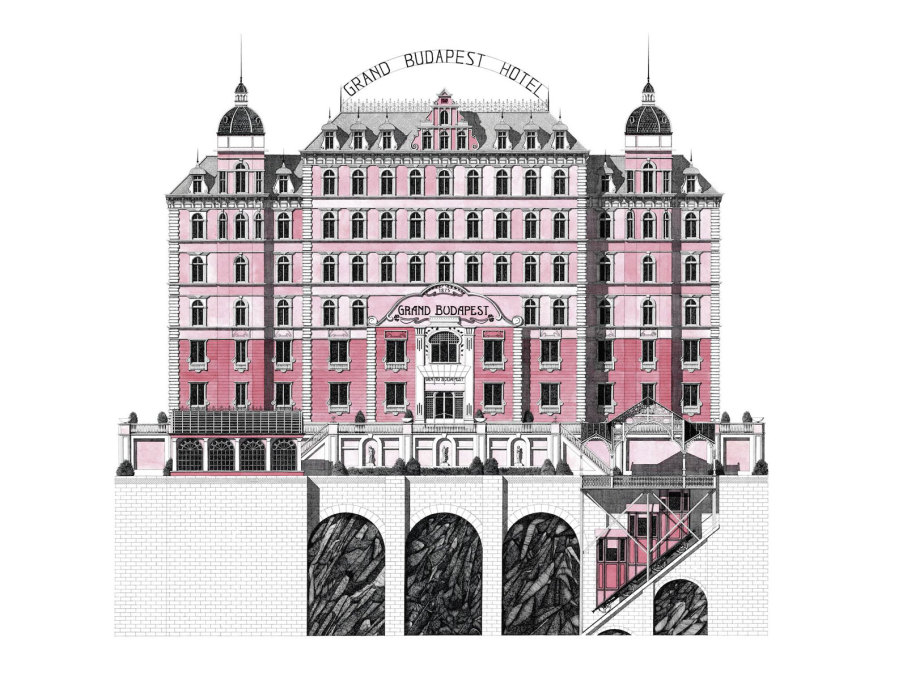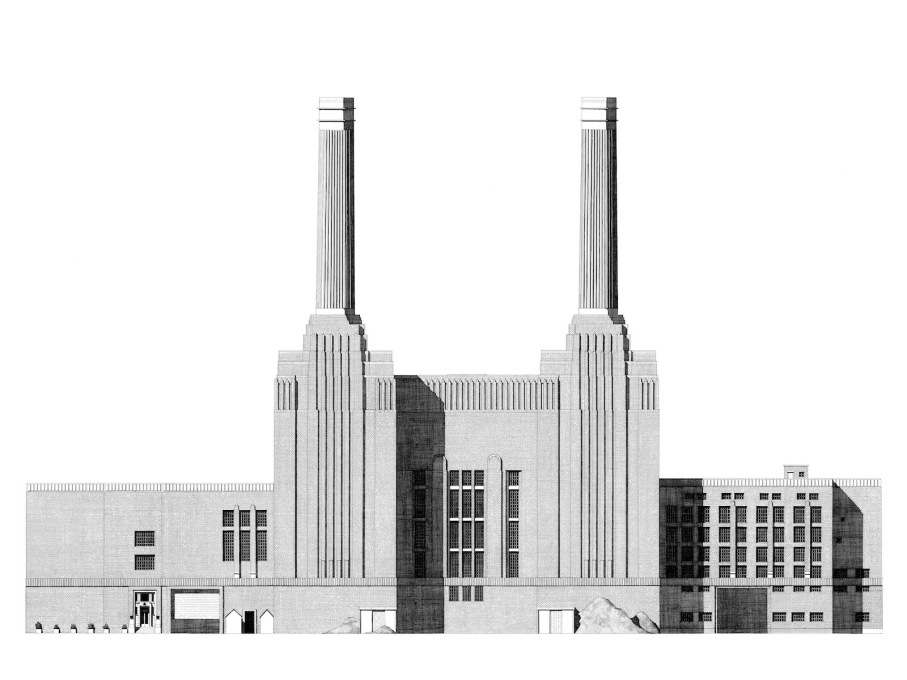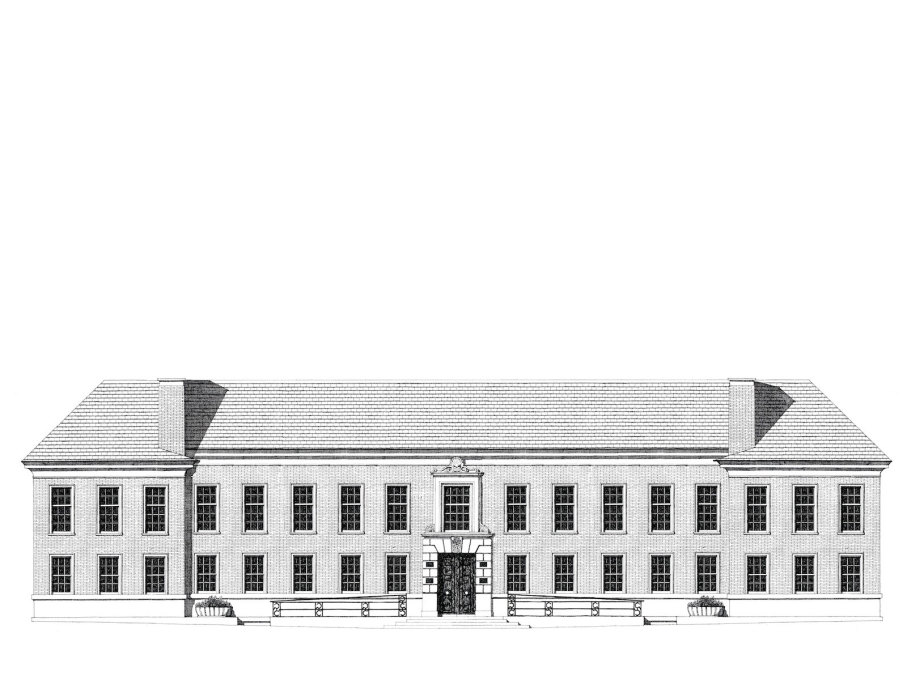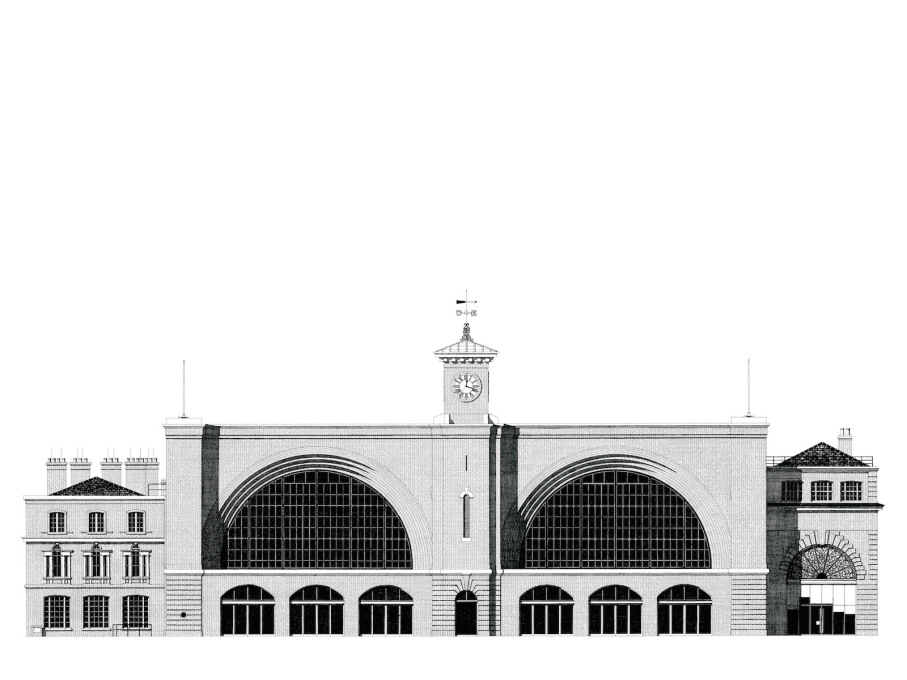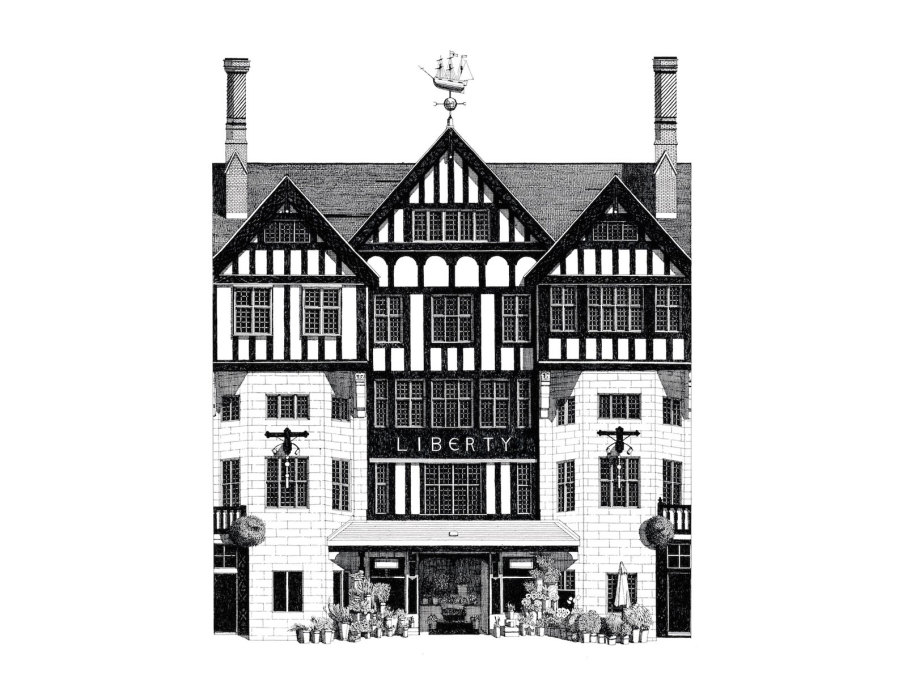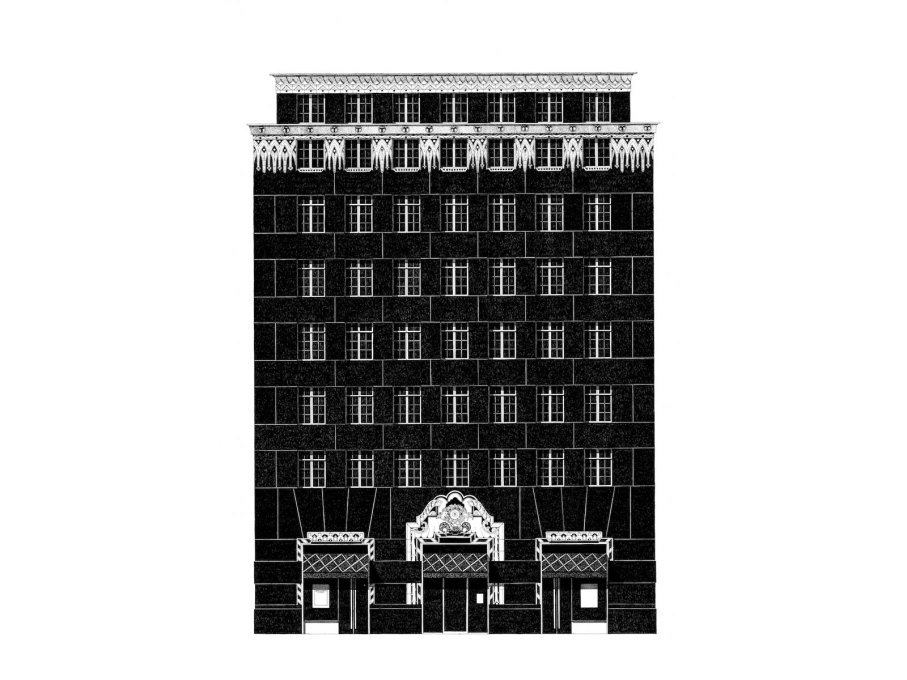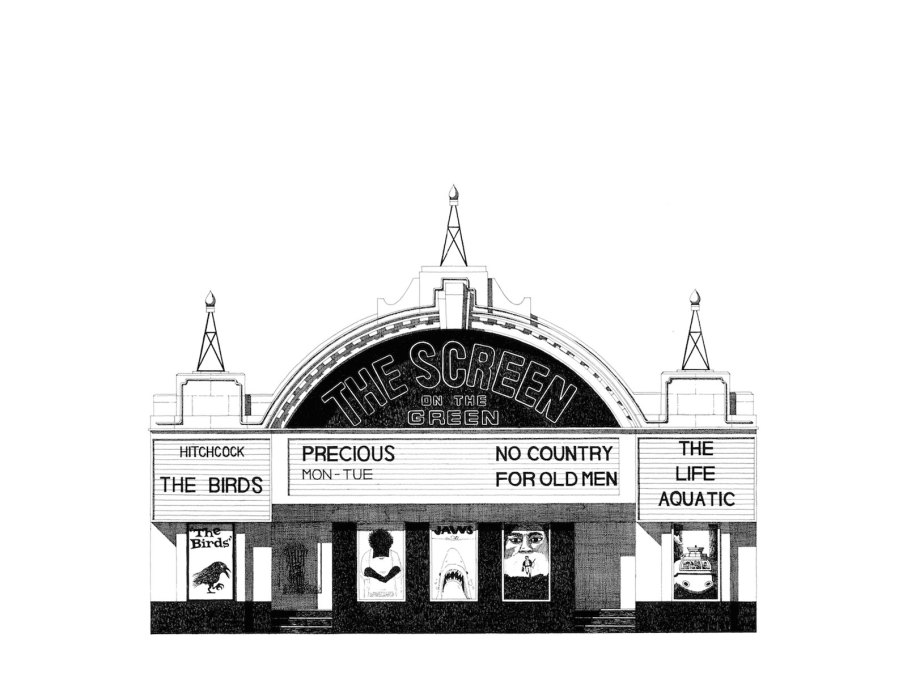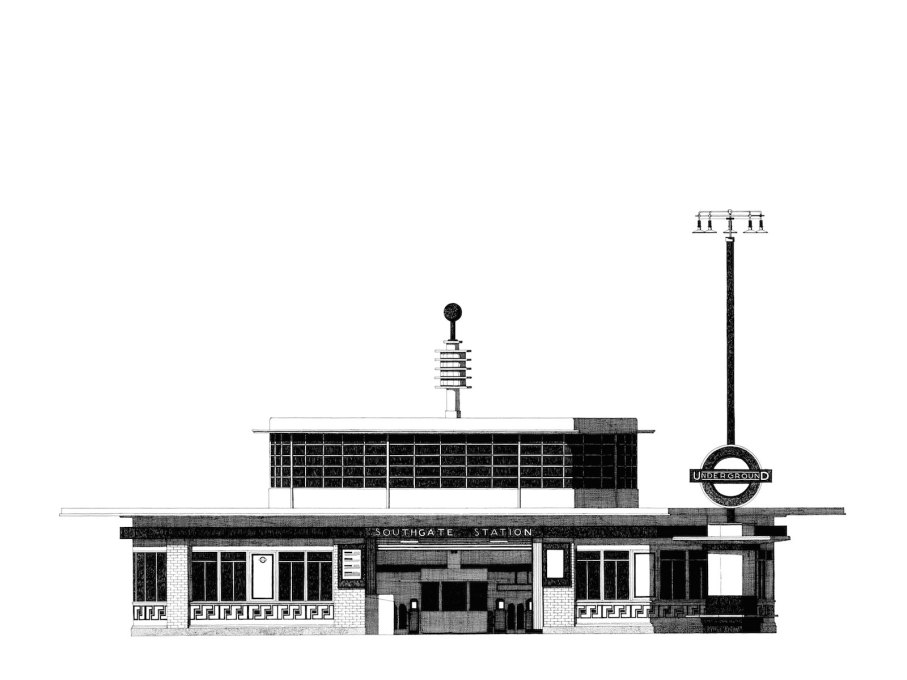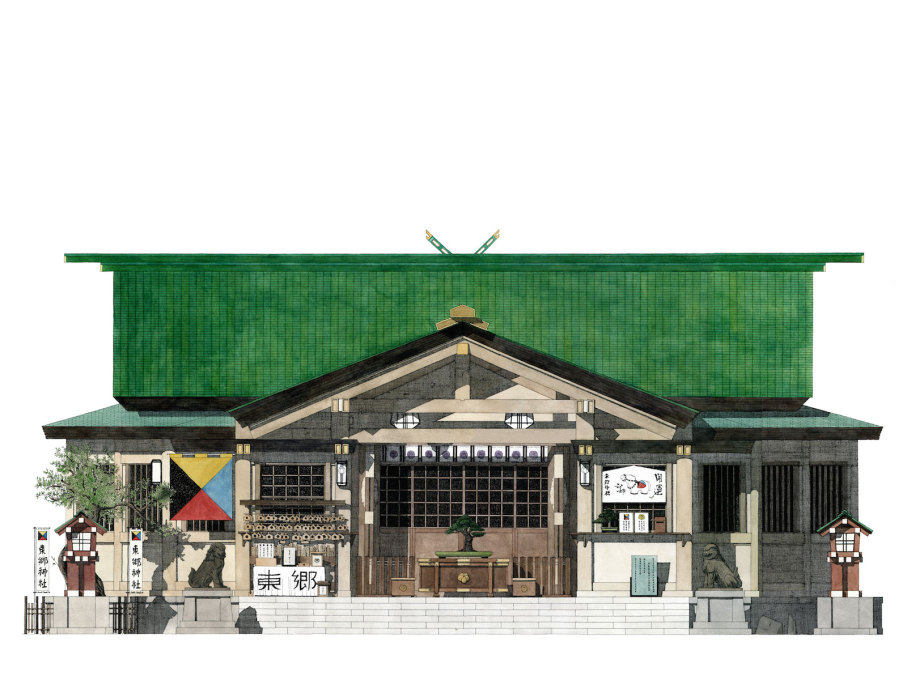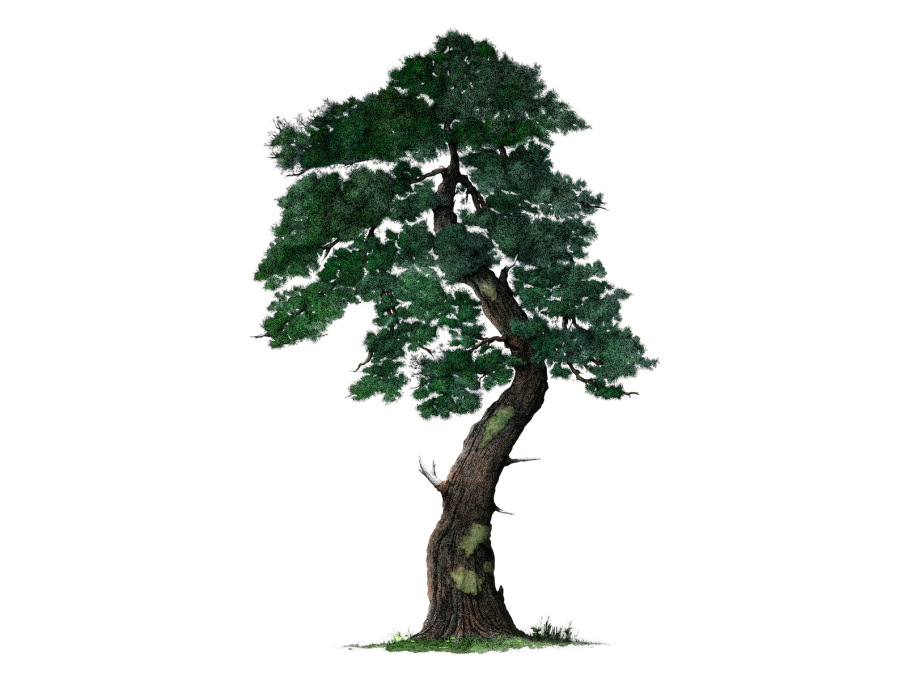In a world where it has become increasingly difficult to distinguish between the artful lustre of renderings and buildings photographed in concrete reality, London-based French illustrator Thibaud Herem’s incredibly detailed drawings stand out in their four-square measured minutiae and precision. Never formally trained as an architect, Herem – who produces his creations entirely by hand in pen and ink – has gained something of a second education by spending thousands of hours reconstructing buildings on paper. He spoke to uncube’s Fiona Shipwright about how he has made his interest in architecture perfectly align with his practice.
You’re a trained graphic designer who now spends an awful lot of time looking at buildings. Did you ever want to become an architect and design buildings rather than illustrate them?
I always wanted to be on the illustration side of things rather than the design side. I’m very interested in the aesthetic aspect of architecture and I find that graphic design allows me to learn about this through the construction of images of buildings. In this way I learn about the history of buildings too.
uncube’s current issue is on the theme of Bricks, a subject that appears frequently in your work! By drawing materials like brick in such fine detail do you feel you are almost undertaking a building process too?
Drawing a building brick by brick allows me to understand its structure and composition much better. The tiniest details are uncovered and the personality of the building itself is also revealed through this process, which is a very lengthy and slow one. During this, I tend to let my mind roam free and often imagine a building’s construction process, trying to picture how many people worked on it, how long it took, the different type of skills they must have had – and then try to produce a drawing in respect to these thoughts.
You have drawn a great number of buildings in London from historical icons to intriguing lesser known examples. What is it about the city’s architecture that you find so compelling?
Everything about London was attractive to me before I moved here and its architecture was one of the most appealing aspects – even if I didn’t know that much about it when I first arrived. To be honest, even now, after 10 years here, I still discover hidden gems every week. There is very distinctive aspect to architecture in London; it is more messy and less united than cities like Paris or Rome, but its heritage is cherished with pride. So for me it is the place to be, no doubt. The list of buildings I want to draw here is endless. Whenever it’s time to start a new one it’s always the same difficult question: which one? I am however planning a few trips abroad in the near future so my output is likely become a bit more international from now on.
Last year you produced a wonderful image of the building that has the starring role in Wes Andersons’s film, “The Grand Budapest Hotel”. Anderson’s hotel is of course fictional but the building itself is real – the Palace Bristol Hotel in Karlovy Vary, Czech Republic. Did you enjoy mixing fiction with fact on paper?
For each drawing I find that there is something special about the building that drives me. For “the Grand Budapest” it was the symbolism, what the film’s story represented for me, and the great respect that I have for the director. Drawing “fiction” was a first for my practice and something that I enjoyed a lot. I spent 600 hours alone on the drawing before adding the watercolour, during which I felt wholly within Wes Anderson’s universe! So it was the fictional aspect of the building that felt most present to me when I was working on it.
What are you working on at present?
Next is more drawing – always more drawing! – in order to get better at it but also to keep on discovering new places. Lately I have been drawing a lot of trees and would like to mix this new focus with my architectural interest, perhaps producing larger-scale drawings. I’m also working on a few new publications and I will be putting on a show in Tokyo towards the end of the year.
– Interview by Fiona Shipwright
Thibaud Herem is a French illustrator based in London. He trained in graphic design, before establishing himself as a freelance illustrator. Following the success of his first book Know Your Rodent, he began to develop his love of illustrating buildings, and in 2013 published London Deco with Nobrow Press, a collection of drawings of London architecture.
www.thibaudherem.com




